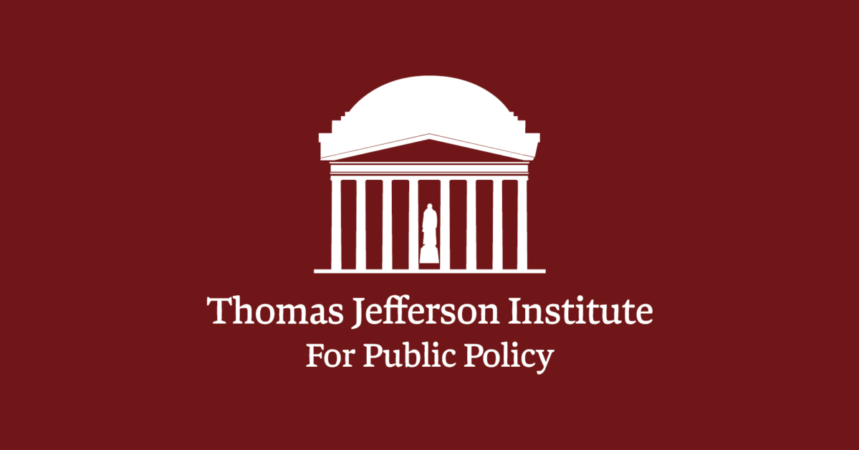I still have my notes from nine years ago.
Speaking at a dinner meeting hosted by the Thomas Jefferson Institute, then-Virginia School Board President Mark Christie argued that “No Child Left Behind” (NCLB) was doomed to failure.
“No Child Left Behind requires that 100 percent – every student – meet a state’s proficiency standards or be deemed a failure,” my notes show Christie said. “That’s a statistical impossibility, and when good schools fail to meet the goal, the public will revolt, and standards-based education will be at risk.”
Nine years later, Christie’s words echo in a letter sent by Governor Bob McDonnell to U.S. Secretary of Education Arne Duncan: “A model that increasingly misidentifies schools as low performing and confuses the public about the quality of their schools does not advance the cause of reform and accountability.”
Worse, the public – whose support for high standards remains critical in the public policy arena – is increasingly confused by the alphabet soup of educational programs and rarely differentiates between an SOL (Standard of Learning) and an AYP (Adequate Yearly Progress).
The public view is perhaps typified by the Hampton Roads Daily Press editorial that pointed out that “only 44 of the (Hampton Roads) region’s 130 schools – a paltry 34 percent – met the AYP achievement targets for 2011. Worse, this represents a 35 percent decline from 2010,” noting “The test scores don’t lie. We’ve regressed.”
But is “Adequate Yearly Progress” a valuable measurement?
Virginia was one of the first states to “raise the bar” on student achievement by increasing the “Standards of Learning” (SOLs) and creating SOL tests measuring whether students had mastered the subject work.
At the time, the battle to create a content-based system was hugely controversial in Virginia. One school division at the time told its employees that they could afford to “go slow” because there would likely be a political change in the governor’s office in the following election. That change didn’t happen, and today Virginia’s SOL program enjoys widespread bi-partisan support – especially when compared with the federal NCLB program.
The 2001 “No Child Left Behind” (NCLB) program attempted to build on standards based accountability. The theory was that each state would use its own existing testing system (or create one) to measure student progress in reading and math. The validity of state-based tests would be measured against the federal National Assessment for Educational Progress (NAEP), often referred to as “the Nation’s Report Card.” Student scores would be disaggregated – scores would be reported for white students, black students, Hispanics, economically disadvantaged, students with disabilities, and students with limited English proficiency, as well as for the student population as a whole. No longer would a school be able to “hide behind” high-performing students giving the school a higher average while ignoring low performing students).
Each school and school division was required to make “Adequate Yearly Progress (AYP)” by meeting a rising percentage of students passing each year until 100 percent of students were passing state exams by 2014 – not only for the overall student population but for each of the disaggregated student populations. In other words, if 75 percent of students were required to pass math in a particular year and all student segments passed except one, the school or school division would be deemed as not making AYP. For schools that repeatedly failed to meet AYP, the federal government prescribed a set of possible corrective actions.
Hence, because the “finish line” moved further down the field, a school that “made AYP” one year could be a “failing school” the following year, even if most of its student scores remained the same or increased. This year, in Virginia, 342 schools were classified in that murky category.
Because making AYP is based on SOL passage, the public has easily become confused between these two standards. While NCLB has both virtues and disadvantages, the key measure for Virginians is the Standards of Learning exams.
There are legitimate and ongoing points of discussion about Virginia’s standards-based accountability system: Are the standards high enough? Do they cover the right material? Are the student assessments rigorous enough? Are the cut-scores (the score considered “passing”) at the right levels? Should there be alternative assessments for certain student populations (i.e., special education or English Language Learners) and what should be the criteria for their usage? Have teachers become too focused on “passing the SOLs” to the detriment of other material and if so, what should be done about it? And more.
But a frenzied argument over Virginia’s performance on a flawed federal standard is a distraction from the real focus, which should be on constantly improving Virginia’s own accountability system.
(Chris Braunlich is vice president of the Thomas Jefferson Institute for Public Policy and a member of the Virginia State Board of Education. The views expressed here are his own and do not necessary reflect the opinions of the Institute or its Board of Directors, or of the State Board of Education. He may be reached at c.Braunlich@att.net)






